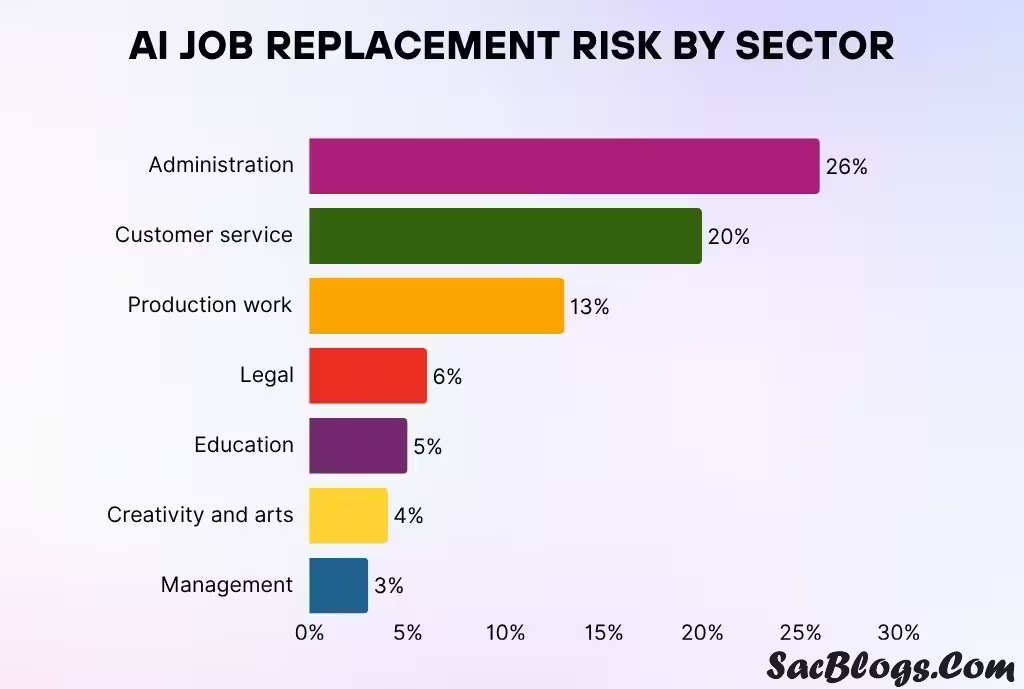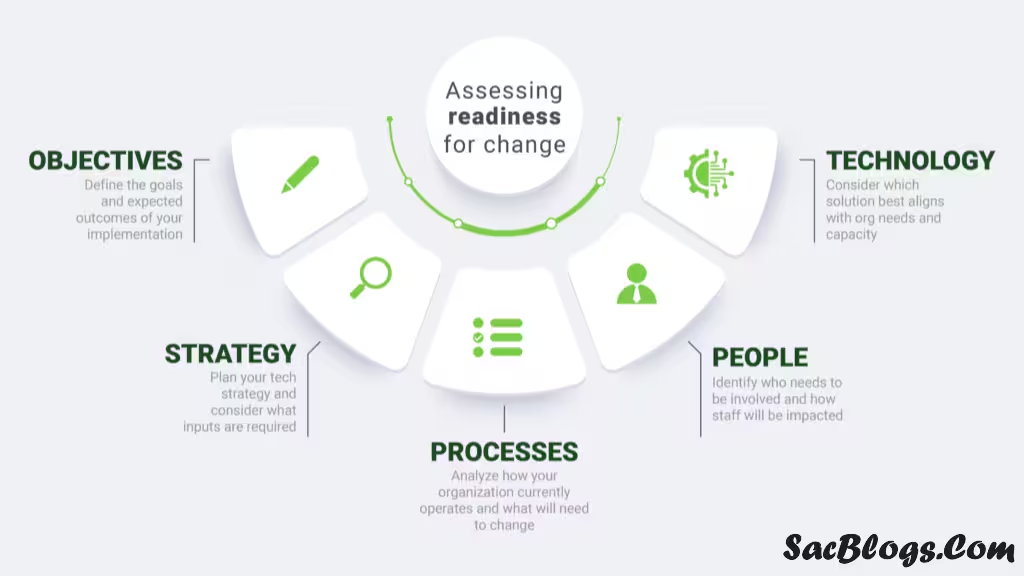Pakistan stands at a technological crossroads, where the relentless march of automation presents both unprecedented opportunities and formidable challenges. With an economy showing signs of robust recovery—growing by 5.66% in the last quarter of FY2025 and reaching an overall growth of 3.04% for the year—the nation demonstrates promising potential for technological integration .
This growth, largely propelled by a 19.95% expansion in the industrial sector, coincides with the government’s ambitious Artificial Intelligence Policy 2025 approval, signaling a decisive shift toward technological modernization . Yet, this transition unfolds against a complex backdrop of employment concerns, with current unemployment projected at approximately 6.5% for 2025 and youth unemployment lingering at 10.6% . The central question remains: Can Pakistan harness automation for economic advancement while safeguarding and creating employment opportunities for its growing workforce?
Table of Contents
The duality of automation’s impact is already evident across Pakistan’s economic landscape. From manufacturing floors to agricultural fields, technologies are transforming traditional work patterns, demanding new skills, and creating novel opportunities in emerging sectors. This comprehensive analysis examines the intricate balance between technological progress and employment preservation, exploring sector-specific impacts, policy responses, and strategies to navigate this transformative period successfully.
The Current Economic and Employment Landscape
Understanding Pakistan’s automation journey requires contextualizing its broader economic environment. The country’s recent economic performance reveals both resilience and vulnerability, with the industrial sector’s dramatic growth of 19.95% in Q4 FY2025 highlighting its potential as both a driver and disruptor of employment . This industrial surge, particularly in large-scale manufacturing sectors like automobiles (+46.15%) and transport equipment (+36.6%), increasingly relies on automated processes and AI-enhanced production systems .
Despite these positive growth indicators, Pakistan’s labor market faces significant challenges. The overall labor force participation rate stands at approximately 54.5%, with a substantial gender gap that sees male participation at 81.1% compared to only 22.2% for females . This disparity represents both a structural weakness and potential opportunity for inclusive growth through properly managed technological integration. With the services sector maintaining a 3% growth rate and agriculture revised up to 1.51%, each major economic sector presents distinct automation challenges and opportunities that require tailored approaches .
The recruitment landscape is simultaneously evolving, with 2025 witnessing a dramatic transformation in hiring practices driven by technological innovation and shifting economic dynamics . Skills-based hiring is increasingly prioritized over traditional qualifications, with micro-credentials and demonstrable project experience gaining value in the job market. This shift reflects the broader transformation occurring across industries as automation reshapes skill requirements and employment patterns.

Sectoral Impact: Where Automation Meets Pakistani Workforce
Manufacturing Under Transformation
Pakistan’s manufacturing sector, which employs millions, stands at the epicenter of the automation revolution. Research indicates that automation could decrease factory jobs by 25% to 40% over the next decade, particularly in foundational sectors like textiles and automobile manufacturing . The introduction of robotics, AI-powered production lines, and automated machinery has already begun reducing demand for traditional factory workers performing repetitive, manual tasks .
This technological shift presents a dual reality. While companies investing in smart manufacturing enhance productivity and reduce costs through AI-driven machines, these efficiency gains often come at the expense of traditional employment patterns. A recent study on automation’s impact on Pakistan’s manufacturing sector confirmed that rising technology adoption significantly influences employment dynamics, simultaneously displacing workers in routine roles while creating demand for new technical skills . This transformation necessitates urgent workforce reskilling to align human capabilities with evolving industry requirements.
Agriculture’s Technological Evolution
As the backbone of Pakistan’s economy, employing a significant portion of the population, agriculture faces its own automation transformation. Technologies like drones, AI-driven irrigation systems, and automated harvesting machinery promise increased efficiency and yield but simultaneously threaten to displace farmers and laborers who rely on traditional agricultural methods for their livelihoods .
The sector’s modest growth of 1.51% in FY2025 reflects both its importance and its developmental challenges . Rural areas, where agriculture serves as the primary employment source, could face economic hardships if workers are not systematically reskilled for emerging opportunities within and beyond the agricultural sector. The automation of agriculture follows a global pattern where precision farming technologies enhance productivity while reducing labor requirements, creating a paradox of improved food security alongside potential rural unemployment.
Retail and Services Reshaped
Pakistan’s retail sector is experiencing significant disruption from automation technologies. AI-powered self-checkout systems, inventory management tools, and e-commerce platforms are reducing the need for traditional retail workers, while the parallel rise of online shopping and automated warehouses accelerates this transition . While small businesses and local markets may continue employing people through traditional models, large-scale retailers are increasingly moving toward automated solutions that threaten conventional retail employment.
The services sector, which achieved 3% growth in FY2025, faces its own transformation through automation . From AI-driven customer service chatbots to automated financial advisory services, technologies are reshaping service delivery models across banking, finance, and numerous other service industries. This evolution demands workforce adaptation and creates opportunities in technology management, data analysis, and digital customer experience design.

Quantifying the Risk: Job Displacement Projections
Comprehensive analyses suggest that approximately 17% of jobs in Pakistan are at high risk due to automation in the coming years . A World Economic Forum study estimates that by 2030, up to 1.2 million jobs could be displaced in Pakistan if current automation trends continue without adequate workforce planning and intervention . This potential displacement represents a significant challenge for a country with existing unemployment concerns and a growing youth population entering the workforce each year.
It is crucial to contextualize these projections within global patterns. OECD analyses suggest that occupation-based approaches to estimating automation risk may overestimate job losses, as occupations labeled high-risk often still contain substantial tasks that are difficult to automate . When adopting a task-based approach that accounts for heterogeneity within occupations, the average automatable jobs across OECD countries drops to approximately 9%, with variations between nations reflecting differences in workplace organization, previous investments in automation, and worker education levels .
For Pakistan, these global insights suggest that while automation risks are substantial, they may be manageable through strategic interventions that enhance the uniquely human elements of various roles while preparing workers for complementary functions alongside automated systems.

Emerging Opportunities: The New World of AI Jobs
Despite legitimate concerns about job displacement, new opportunities are emerging across Pakistan in technology-driven sectors. As AI and automation reshape industries, demand is growing for skilled professionals who can develop, manage, and maintain these technologies . This creates promising pathways for employment in fields that barely existed a decade ago.
AI and Data Science Expansion
Artificial intelligence and data science represent the fastest-growing fields within Pakistan’s evolving job market. Currently, approximately 15,000 professionals work in AI-related fields, with this number expected to grow significantly as more companies integrate AI into their operations . The demand for data analysts, AI engineers, and machine learning specialists is rising across multiple sectors, from healthcare to finance, creating high-value employment opportunities for technically skilled workers.
Universities and training institutes are responding to this demand by introducing specialized AI and data science programs to equip students with relevant skills. This educational evolution is crucial for building Pakistan’s domestic capacity in frontier technologies and preventing over-reliance on imported expertise. With proper training infrastructure, Pakistan can develop homegrown AI talent capable of driving innovation and competing in global markets.
Robotics and Automation Engineering
The increasing adoption of robotics in manufacturing, healthcare, and logistics is generating new opportunities for robotics engineers and automation specialists . As Pakistani industries automate, professionals with expertise in designing, programming, and maintaining automated systems will find growing employment opportunities, often with competitive compensation reflecting the specialized nature of these skills.
The global robotics market continues its expansion, and Pakistan can benefit by developing a skilled workforce capable of not only operating but also innovating in this sector. From agricultural drones to medical robotics, applications abound for locally-developed solutions addressing Pakistan’s specific challenges and opportunities, potentially creating export possibilities in similar markets.
Freelancing and Remote Work Revolution
Pakistan has established itself as one of the world’s top countries for freelancing, and AI skills are becoming increasingly valuable in this gig economy . Many Pakistani freelancers now offer AI-driven services such as chatbot development, data analysis, and AI-based marketing automation to international clients, leveraging global demand while working from home.
By acquiring AI-related skills, Pakistani freelancers can tap into a growing global market, enhancing their earning potential and contributing to the country’s economy through foreign currency remittances. This trend represents a unique opportunity to bypass traditional employment constraints and engage directly with the global digital economy, particularly for talented workers outside major urban centers.

| Sector | Displacement Risks | Emerging Opportunities |
|---|---|---|
| Manufacturing | 25-40% potential job decrease over next decade | Robotics engineering, automation maintenance, AI system management |
| Agriculture | Reduction in manual labor needs through drones & automated systems | Precision agriculture specialists, drone operators, agri-tech analysts |
| Retail | Traditional roles displaced by e-commerce & automated checkouts | E-commerce management, digital marketing, AI customer service specialists |
| Overall Economy | 17% of jobs at high risk, 1.2 million potential displacements by 2030 | AI, data science, cybersecurity, freelancing; 15,000+ in AI fields currently |
Policy Response: Pakistan’s National AI Strategy
Recognizing both the potential and challenges of automation, Pakistan’s government has taken decisive action through the approval of the Artificial Intelligence Policy 2025. Federal Minister for IT and Telecommunication, Ms. Shaza Fatima Khawaja, described this policy as “a national commitment to responsible innovation, ethical governance, and inclusive prosperity through AI” . This comprehensive framework is structured around six strategic pillars designed to guide Pakistan’s technological transformation while addressing socioeconomic implications.
The policy’s awareness and readiness pillar targets large-scale human capital development, aiming to train 200,000 individuals annually, award 3,000 AI scholarships each year, and provide 20,000 paid internships . These initiatives prioritize equipping Pakistani workers with skills relevant to the automated economy, simultaneously addressing both unemployment concerns and industry needs for qualified technical staff.
The AI innovation ecosystem pillar focuses on establishing a National AI Fund (NAIF), creating Centers of Excellence in AI across seven major cities, and developing venture and innovation funds to support research and commercialization . This infrastructure aims to foster homegrown innovation while attracting international investment and partnerships, potentially positioning Pakistan as a regional AI hub.

The Challenge of Readiness and Implementation
Despite ambitious policy frameworks, Pakistan faces significant implementation challenges. A recent report by Oxford Insights ranked Pakistan eighth out of 17 countries in South and Central Asia for government AI readiness—behind India, Bangladesh, and Sri Lanka . This positioning highlights the gap between Pakistan’s aspirations and its current capabilities, underscoring the work required to translate policy into practice.
The French Development Agency has classified Pakistan as a “mid-level performer” with “moderate advancements in infrastructure and human capital readiness” . This assessment reflects the foundational investments needed in both physical and educational infrastructure to support widespread AI adoption and ensure the workforce can transition effectively into new roles.
Critically, observers have noted limitations in previous approaches. Natasha Uderani, co-founder of Data Darbar, emphasized that Pakistan needs to “establish a better national strategy and invest more in AI-focused education,” advocating for “more vocational programs to upskill the current workforce” . These insights suggest that complementing broad policy frameworks with practical implementation strategies will be crucial for success.

The “Slop” Problem: Ethical Considerations in Automation
Pakistan’s automation journey includes less productive dimensions, notably the surge in AI “slop”—low-quality visual content generated using cheap and widely available AI tools that floods social media platforms, blurring the lines between reality and fiction . This phenomenon represents both an ethical challenge and a distraction from substantive technological development.
Nighat Dad, executive director of the Digital Rights Foundation, noted that “technology moves fast, adoption outpaces regulation every time,” observing that the ease with which “fake news, propaganda, or hateful content” is created with AI tools “can escalate polarization and even fuel violence” . She highlighted the particular vulnerability of Global South countries like Pakistan, which “often bear the brunt of their unregulated harms, without having any real say in their design or governance” .
Despite these concerns, some Pakistanis have found legitimate economic opportunities in AI-generated content. Zubair, a 20-year-old entrepreneur from Karachi, reported that using AI tools has increased his earnings to approximately $2,000 per month, allowing him to launch his own content creation company . His experience illustrates the technology’s dual-use nature, capable of both generating low-quality “slop” and empowering legitimate business ventures when applied ethically and creatively.

Strategic Recommendations for Balanced Automation
Educational Transformation and Workforce Reskilling
Addressing automation’s challenges requires fundamental educational reform. Pakistan must expand AI and automation-related courses in universities and technical institutes while developing vocational training programs specifically targeting workers in industries facing automation risks . This educational transformation should emphasize STEM subjects alongside critical thinking, creativity, and emotional intelligence—skills that complement rather than compete with automated systems.
The private sector’s involvement is crucial for successful workforce development. Companies should invest in employee training programs, encourage AI adoption in ways that support rather than simply replace human workers, and collaborate with educational institutions to ensure curricula reflect industry needs . Such partnerships can help bridge the gap between academic preparation and workplace requirements, accelerating workers’ transition into new roles.
Inclusive Growth Strategies
Automation’s benefits must be distributed broadly to prevent worsening existing inequalities. Special attention should focus on increasing female participation in technology fields, potentially leveraging remote work opportunities to engage talented women who face mobility restrictions or traditional employment barriers . Similarly, geographic inclusion requires extending digital infrastructure beyond major urban centers to ensure rural populations can participate in the automated economy.
Social safety nets require strengthening to support workers during transition periods. Policies such as unemployment benefits, job transition support, and retraining programs for workers displaced by automation can mitigate personal hardship while maintaining consumer demand and social stability . These measures represent investments in human capital rather than mere welfare expenditures, preserving skills and knowledge during industry transformations.
Strategic Sector Development
Pakistan should prioritize automation in sectors with strong export potential and strategic importance while carefully managing employment impacts. The textile industry, for example, could leverage automation to enhance international competitiveness against regional rivals like China and India, potentially expanding market share and ultimately supporting higher-value jobs in design, marketing, and technology management .
Simultaneously, Pakistan should actively cultivate employment-intensive sectors less susceptible to automation, including creative industries, personal care services, and education. These fields typically require human interaction, creativity, and emotional intelligence—capabilities that remain difficult to automate and may increase in value as technology permeates other aspects of life and work.

Conclusion: Forging Pakistan’s Automated Future
Automation presents Pakistan with neither an inevitable jobs crisis nor a guaranteed economic panacea. Instead, it offers a spectrum of potential futures whose realization depends on policy choices, educational investments, and strategic vision. The country’s recent economic growth, demonstrated by the 5.66% expansion in Q4 FY2025, provides a foundation for technological adoption, while its youthful population represents both a potential dividend and responsibility .
The approval of Pakistan’s AI Policy 2025 marks an important commitment to technological advancement, but its success will depend on implementation effectiveness, resource allocation, and continuous adaptation to emerging challenges and opportunities . With approximately 17% of jobs at high risk from automation, the stakes are substantial, affecting millions of workers and the nation’s social fabric .
Pakistan’s automation journey will ultimately reflect its ability to balance technological adoption with human development, global integration with local needs, and economic efficiency with social equity. By embracing automation’s opportunities while proactively addressing its disruptions, Pakistan can potentially forge a development path that leverages technology for inclusive growth rather than exclusionary advancement. The challenge is substantial, but with strategic vision and concerted effort, Pakistan can transform technological disruption into a foundation for sustainable prosperity.
Read Also: Is Pakistan Ready for the AI Revolution? A 2025 Reality Check
Frequently Asked Questions
1. What percentage of jobs in Pakistan are at risk due to automation?
Research indicates that approximately 17% of jobs in Pakistan are at high risk due to automation, with some studies projecting that up to 1.2 million jobs could be displaced by 2030 if current trends continue without adequate intervention .
2. Which sectors in Pakistan are most vulnerable to automation?
Manufacturing is particularly vulnerable, with estimates suggesting 25-40% of factory jobs could decrease over the next decade, especially in textiles and automobile manufacturing . Agriculture and retail also face significant automation impacts as technologies like drones, AI-driven systems, and e-commerce platforms transform traditional work .
3. What new job opportunities is automation creating in Pakistan?
Automation is generating demand for AI specialists, data scientists, robotics engineers, and cybersecurity experts . Currently, approximately 15,000 professionals work in AI-related fields in Pakistan, with this number expected to grow significantly as technology adoption increases .
4. How is the Pakistani government responding to automation challenges?
The government has approved the Artificial Intelligence Policy 2025, which includes training 200,000 individuals annually, awarding 3,000 AI scholarships, and providing 20,000 paid internships . The policy also establishes Centers of Excellence across seven cities and creates a National AI Fund to support innovation .
5. How does Pakistan’s AI readiness compare to neighboring countries?
A recent report ranked Pakistan eighth out of 17 countries in South and Central Asia for government AI readiness—behind India, Bangladesh, and Sri Lanka . The French Development Agency has classified Pakistan as a “mid-level performer” with moderate advancements in infrastructure and human capital .
6. What is AI “slop” and how is it affecting Pakistan?
AI “slop” refers to low-quality visual content generated using cheap, widely available AI tools that floods social media platforms, blurring reality and fiction . In Pakistan, this has included deceptive YouTube channels using AI to create misleading content that appears officially affiliated with the government .
7. Can automation actually create jobs in Pakistan?
Yes, while automation displaces some roles, it also creates new opportunities in technology development, management, and maintenance . Pakistani freelancers are already leveraging AI skills to serve international clients, with some earning around $2,000 monthly by offering AI-driven services .
8. What skills will be most valuable in automated industries?
Technical skills in AI, data analysis, robotics, and cybersecurity will be increasingly valuable, alongside uniquely human capabilities like creativity, critical thinking, and emotional intelligence . Employers are increasingly emphasizing demonstrable skills and project experience over traditional qualifications alone .
9. How is automation affecting different regions of Pakistan differently?
Urban centers with better digital infrastructure and educational institutions are better positioned to benefit from automation-related opportunities, while rural areas dependent on agriculture face greater displacement risks without targeted reskilling programs . This potential disparity underscores the need for geographically inclusive digital development strategies.
10. What can current workers do to prepare for increased automation?
Workers should proactively seek reskilling opportunities in technology-related fields, develop complementary skills that are difficult to automate, and stay informed about industry trends . Embracing lifelong learning and flexibility will be crucial for navigating the evolving employment landscape successfully.







1 thought on “Automation vs Employment in Pakistan – Navigating the Future of Work and Growth”